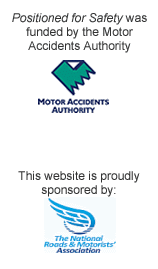Protection from other drivers (SMIDSY)
Just over one third of all motorcycle crashes are single vehicle crashes where you can only blame yourself or road conditions. But if you are in a crash with another vehicle, the chances are high that it will be the fault of the other driver. Research into motorcycle crashes shows that the other driver is at fault in up to 70% of motorcycle crashes with other vehicles (RTA, 2002).
In many of these crashes the driver will say they simply didn’t see the motorcycle until it was too late. (Sorry Mate I Didn’t See You – SMIDSY).
The situation may be getting worse. In the past, the driving landscape was made up of 95% cars and station wagons. The increasing proportion of taller vehicles has changed the landscape so it is harder to see and be seen across traffic. This is particularly a problem for vulnerable road users such as pedestrians, cyclists and motorcyclists.
What can you do to protect your self?
In a recent survey of NSW drivers, 55% reported having at least one experience of having seen a motorcyclist only at the last minute when they were changing lanes. This confirms our experience but what is more worrying is that only 6% of these same drivers nominated changing lanes as a time when they should watch out for motorcycles (Benton, 2002).
Other research has found that drivers who are unfamiliar with motorcycles are significantly more likely to have a crash with a motorcycle (Hurt, Ouellet & Thom, 1981, Brookes & Guppy, 1990). This means that people who do not ride, or know someone else who rides, are more likely to crash into a motorcycle.
Motorcycle awareness programs for drivers are essential, but it is also up to you to “stack the deck” in your favour.
Do what ever you can to draw their attention.
What you wear can make a difference some of the time. You need to be within the other driver’s line of vision and your clothing must stand out against the background.
In one recent NZ study, riders wearing any reflective or fluorescent clothing had a 37% lower risk than other riders. Riders wearing white helmets had a 24% lower risk than those wearing black helmets. The study was conducted in mainly urban areas of Auckland (Wells et al, 2004).
By comparison, a summary of European research into safety measures for motorcyclists concluded that florescent clothing is effective during daylight, but not against a bright background. They also found that retroflective clothing gives little improvement at night (Noordzij et al, 2001).
Day time headlights may also help but again, only if they make you stand out against the rest of the traffic. In the NZ study, riders with lights on during the day had a 27% lower risk.
Size does appear to make a difference. Small motorcycles have a smaller profile and are even less visible from the front or rear. You need all the help you can get to stand out.
- Do not ever assume they have seen you.
- Learn to recognise each vehicle’s blind spot and stay out of them.
- Do not weave between lanes in moving heavy traffic.
- Try to stay long enough in each driver’s rear vision mirror to make sure they have seen you before you move on.
- Use your horn to draw attention if you think you haven't been seen.
- Move within your lane to improve your chance of being seen.
- When riding in traffic and your lane is moving freely but the lane beside you has slowed or stopped, watch out for impatient drivers suddenly moving into your lane.

